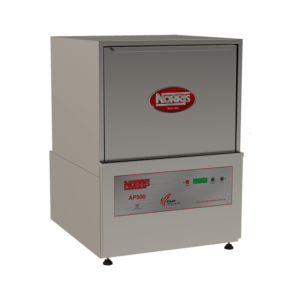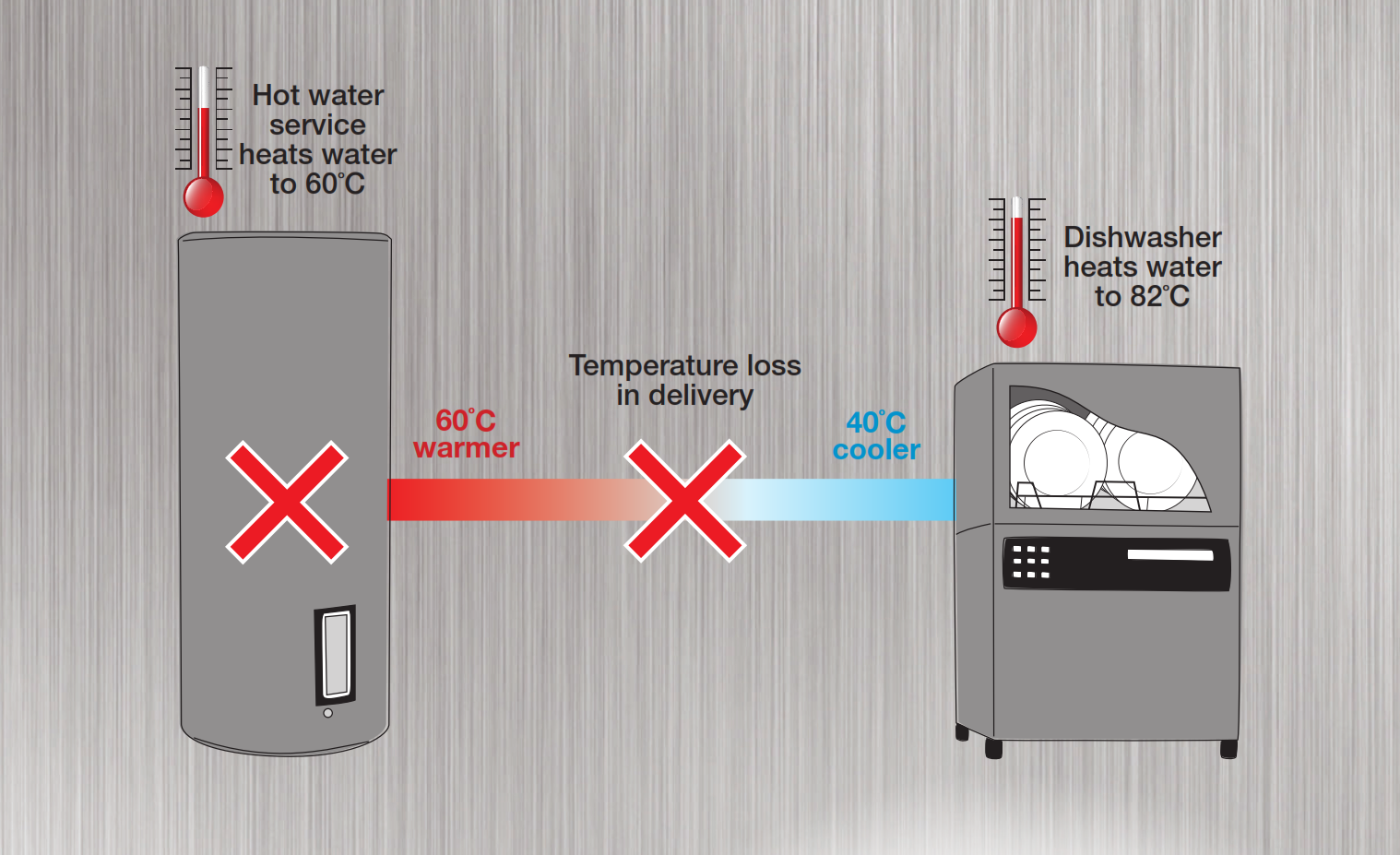Our focus has always been built to last, reliable machines with lower energy consumption.
We know a commercial kitchen uses a lot of hot water and electricity and increasing power bills are crippling to the bottom line. So we designed the Norris AP500 to connect to cold water and only use the energy it needs – but still deliver 1 minute, back-to-back wash cycles.
The AP500 is a compact under bench dishwasher that has been specifically designed to solve the 3 key problems in a commercial kitchen:
1. Running out of hot water and having to wait for compliant temperature (this is a “connect to cold water” unit that is always ready!)
2. Waiting between cycles (1 minute, back-to-back wash cycles)
3. Reduces your machine running costs by a gob-smacking 50%!!
 Our energy claims are supported by testing at the Newcastle Institute For Energy and Resources, (September 2018):
Our energy claims are supported by testing at the Newcastle Institute For Energy and Resources, (September 2018):
“The operating system in the Norris AP500 as tested can use up to 50% less electricity compared to the operating system of previous model, Norris Cafemate”.
The energy claim project was undertaken due to our integrity in the area of marketing: we simply did not want to make a claim that was not true.
We reached out to the CSIRO to see if there was a pathway to a credible testing process for the machine energy claims.
A CSIRO Facilitator from the SME Connect team worked with our Norris team to understand their requirements. Under the Department of Industry, Science, Energy and Resources Innovation Connections program, CSIRO identified the University of Newcastle (UoN) as having the right expertise to assist Norris with their research needs.
Lead researcher Professor Behdad Moghtaderi from the UoN was appointed to assess the Norris AP500. Testing took place at the UoN’s research facility, the Newcastle Institute for Energy and Resources (NIER). The Facility’s experience with new technology meant it could validate the benefits delivered by the AP500 and provide recommendations on how to further optimise its design for energy efficiency.
To read more, CLICK HERE

